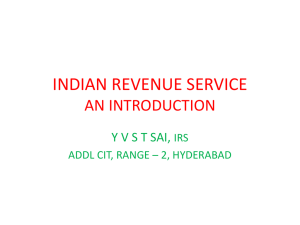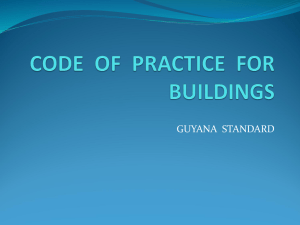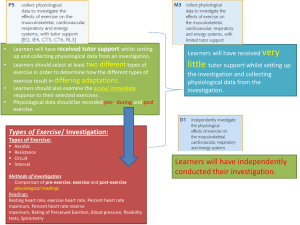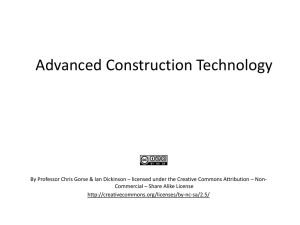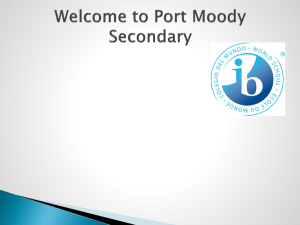High School Investigations
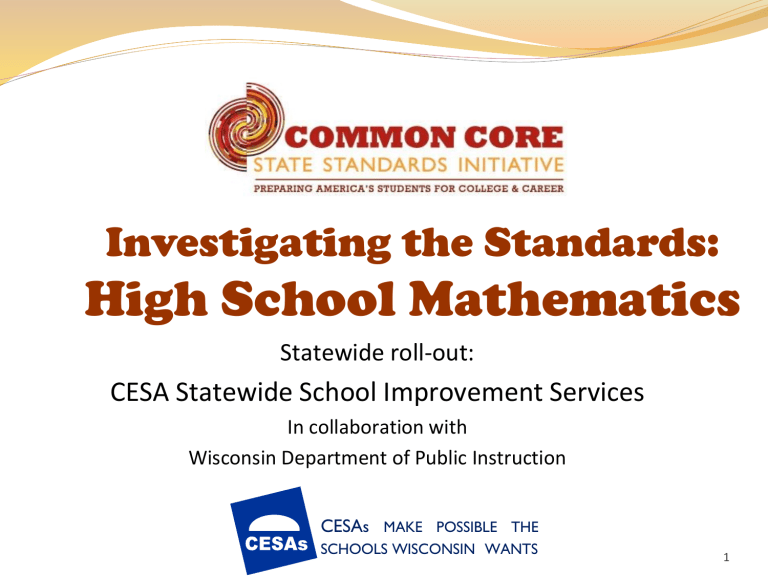
Investigating the Standards:
High School Mathematics
Statewide roll-out:
CESA Statewide School Improvement Services
In collaboration with
Wisconsin Department of Public Instruction
CESA s MAKE POSSIBLE THE
SCHOOLS WISCONSIN WANTS
1
Foundations for Investigating the Standards
Foundations for the Investigation Guide 2
Today’s Agenda
Foundations
Investigating the Structure of the Standards (Parts 1 & 2)
Investigating the Rigor of the Standards
Investigating Standards for Mathematical Practice
Investigating Lenses of the Standards
Investigating Vertical Connections
Determining Implications and Action Steps
Foundations for the Investigation Guide 3
1.
2.
3.
4.
5.
6.
Purpose
To understand the underpinnings of the CCSS
To understand the essential differences with the CCSS
To investigate the CCSS
To learn how to investigate the CCSS
To plan local investigations of the CCSS
To reflect about implications to your practice
Foundations for the Investigation Guide 4
Foundations for the Investigation Guide 5
2.
3.
4.
5.
6.
7.
1.
The Message
An extended process toward full adoption
Cannot/should not be rushed – a marathon, not a race
First of many collaborative sessions on the CCSS
Teacher leaders are needed
Our focus – to learn HOW to investigate these standards
We aren’t investigating all standards today. You will be given a process that can be duplicated in your school
We won’t be aligning today – because alignment cannot be done effectively without careful investigation
Foundations for the Investigation Guide 6
To investigate, you will need …
1.
2.
3.
4.
5.
6.
7.
Print out of the Mathematics Common Core
State Standards, K-12 (Appendix A will not be used today)
Investigations Guide
Highlighters
Pen or pencil
Calculator (optional)
Tables for group work
Timer/timekeeper
Foundations for the Investigation Guide 7
Ground Rules for Today
Information-
Giving
Group Work &
Recording
Attentive listening
Open mindset to receive new ideas and information
Note-taking
Open mindset
Professional conversations
Careful note-taking (for taking back)
Deep thinking
Foundations for the Investigation Guide
Record questions – to be addressed later
8
Now … for some background information
Foundations for the Investigation Guide 9
Impetus for the Common Core
State Standards
Currently, every state has its own set of academic standards, meaning public educated students are learning different content at different rates
All students must be prepared to compete with not only their American peers in the next state, but with students around the world
This initiative will potentially affect 43.5 million students which is about 87% of the student population
Foundations for the Investigation Guide 10
CCSS Evidence Base
Standards from individual high-performing countries and provinces were used to inform content, structure, and language. Writing teams looked for examples of rigor, coherence, and progression.
Mathematics
Belgium (Flemish)
Canada (Alberta)
China
Chinese Taipei
England
Finland
Hong Kong
India
Ireland
Japan
Korea
Singapore
Foundations for the Investigation Guide
English language arts
Australia
New South Wales
Victoria
Canada
Alberta
British Columbia
Ontario
England
Finland
Hong Kong
Ireland
Singapore
11
Development of Common Core
Standards
Joint initiative of:
Supported by:
Achieve
ACT
College Board
Foundations for the Investigation Guide 12
The promise of standards
These Standards are not intended to be new names for old ways of doing business. They are a call to take the next step. It is time for states to work together to build on lessons learned from two decades of standards based reforms. It is time to recognize that standards are not just promises to our children, but promises we intend to keep.
Foundations for the Investigation Guide 13
What’s the Big Deal?
The CCSS initiative is a “sea change” in education for teaching and learning!
The CCSS mandates the student learning outcomes for every grade level.
The CCSS force a common language. Your staff will begin using this language.
Students will be tested and instructional effectiveness will be
measured based on CCSS.
Federal funding is tied to CCSS adoption, implementation, and accountability.
English Language Arts and Mathematics CCSS are just the beginning. . .more subject area standards are being developed.
Foundations for the Investigation Guide 14
What are the Common Core
Standards?
“Common Core Standards define the knowledge and skills students should have within their K-12 education careers so that they will graduate high school able to succeed in entry-level, credit-bearing academic college courses and in workforce training programs.”
(NGA & CCSSO, 2010) http://www.corestandards.org/
Foundations for the Investigation Guide 15
Why are common core state standards good for: students?
College & Career Focus. It will help prepare students with the knowledge and skills they need to succeed in college and careers
Consistent. Expectations will be consistent for all kids and not dependent on a student’s zip code
Mobility. It will help students with transitions between states
Student Ownership. Clearer standards will help students understand what is expected of them and allow for more self-directed learning by students
Foundations for the Investigation Guide 16
A Vision for Implementation
Foundations for the Investigation Guide 17
Investigating the
Structure of the Standards:
CCSS High School Mathematics
Foundations for the Investigation Guide 18
Conceptual Themes in High School
Mathematics
Number and Quantity
Algebra
Functions
Modeling
Geometry
Statistics and Probability
Foundations for the Investigation Guide 19
Conceptual Category Overview
Narratives
Activity
#1
Foundations for the Investigation Guide
Open your CCSS
Mathematics
Standards
Documents – turn to
“Algebra” – page 62
20
Conceptual Category Overviews
Activity
#1
Foundations for the Investigation Guide 21
Activity
#1
Activity #1: Investigating the
Structure
Part 1—Overview of Conceptual Categories
Task:
Divide the six Conceptual Categories (Number and
Quantity, Algebra, Functions, Modeling, Geometry,
Statistics and Probability) among the people in your table groups.
Each person reads their assigned category narrative and summarizes key ideas in the table provided.
Take turns sharing important ideas for each category.
Watch the Timer to close this activity when the time is up.
Foundations for the Investigation Guide 22
1.
2.
3.
4.
5.
6.
7.
8.
Structure of the Standards
Standards for Mathematical Practice Refer to the
Carry across all grade levels Standards
Describe habits of mind of a mathematically expert student
Documents
Activity
#2
Make sense of problems and persevere in solving them
Reason abstractly and quantitatively
Construct viable arguments & critique the reasoning of others
Model with mathematics
Use appropriate tools strategically
Attend to precision
Look for and make use of structure
Look for and express regularity in repeated reasoning
Foundations for the Investigation Guide 23
Activity
#2
K-12 Standards for
Mathematical Content
Refer to the
Standards
Documents
K-8 standards presented by grade level
Organized into domains that progress over several grades
Grades K-8 introductions give 2 to 4 focal points at each grade level
High school standards presented by conceptual theme (Number & Quantity, Algebra, Functions,
Modeling, Geometry, Statistics & Probability)
Foundations for the Investigation Guide 24
Structure of the Standards
Activity
#2
Content standards define what students should understand and be able to do
Clusters are groups of related standards
Domains are larger groups that progress across grades
Foundations for the Investigation Guide 25
Activity
#2
College and Career Readiness
Threshold (+)
(+) Standards indicate mathematical knowledge, skills and understandings beyond the threshold for all students
These (+) learning expectations are not part of what all students will be able to accomplish before completing high school
These more “advanced” expectations help define the continuum of learning for students completing more opportunities in mathematics
Can be included in courses required for all students
Foundations for the Investigation Guide 26
Activity
#2
Modeling
Specific modeling standards appear throughout the high school standards indicated by a star symbol (
★
).
Modeling Cycle:
1.
2.
3.
4.
5.
6.
PROBLEM. identifying variables in the situation and selecting those that represent essential features
FORMULATE. formulating a model by creating and selecting geometric, graphical, tabular, algebraic, or statistical representations that describe relationships between the variables
COMPUTE.
analyzing and performing operations on these relationships to draw conclusions
INTERPRET.
interpreting the results of the mathematics in terms of the original situation
VALIDATE. validating the conclusions by comparing them with the situation, and then either improving the model or, deciding if it is acceptable
REPORT. reporting on the conclusions and the reasoning behind them.
Foundations for the Investigation Guide 27
Activity
#2
Modeling Cycle
Problem Formulate
Compute
Validate
Interpret
Report
Foundations for the Investigation Guide 28
Activity
#2
Activity #2: Investigating the
Structure
Part 2—Structure of the Standards
Task:
Refer to the power point slides regarding “cluster, domain and conceptual category”.
See the standards provided in the table provided.
For each standard, find all the elements (Cluster, Domain and Grade/Conceptual Category) and note them in the table provided.
Watch the Timer to close this activity when the time is up.
Foundations for the Investigation Guide 29
Activity
#3
Defining Rigor
Rigor (n). An expectation that requires students to apply new learning to other disciplines and to predictable and unpredictable real-world situations.
-International Center for Leadership in Education
Rigor/Relevance Framework
(Syn) difficulty, challenging
Foundations for the Investigation Guide 30
R
I
G
O
R
Creating assemble, construct, create, design, develop, formulate, write
Evaluating appraise, argue, defend, judge, select, support, value, evaluate
Analyzing appraise, compare, contrast, criticize, differentiate, discriminate, distinguish, examine, experiment, question, test
Applying choose, demonstrate, dramatize, employ, illustrate, interpret, operate, schedule, sketch, solve, use, write
Understanding classify, describe, discuss, explain, identify, locate, recognize, report, select, translate, paraphrase
Remembering define, duplicate, list, memorize, recall, repeat, reproduce state
Activity
#3
REVISED
BLOOM’S
TAXONOMY
Activity
#3
Visualize a classroom of students
DOING
Mathematics
What verbs describe what you hope to see them doing?
Foundations for the Investigation Guide 32
Activity
#3
VERBS FOR “DOING” MATHEMATICS explore predict construct represent explain conjecture discover investigate develop formulate solve
Foundations for the Investigation Guide describe justify verify use
33
Activity
#3
Activity #3: Investigating the Rigor
Task:
Choose a conceptual category in the standards.
Highlight all of the verbs you find.
Discuss the levels of Revised Bloom’s Taxonomy (RBT), questions and sample verbs given.
Determine the appropriate RBT level of each verb and place them in the corresponding RBT level.
Discuss your findings – at which levels do most verbs appear?
Watch the Timer to close this activity when the time is up.
Foundations for the Investigation Guide 34
Activity
#4
Mathematical Practices
4.
5.
6.
7.
8.
1.
2.
3.
Make sense of problems and persevere in solving them
Reason abstractly and quantitatively
Construct viable arguments & critique the reasoning of others
Refer to Page 6 in
Model with mathematics the standards
Use appropriate tools strategically
Attend to precision
Look for and make use of structure
Look for and express regularity in repeated reasoning
Foundations for the Investigation Guide 35
Activity
#4
The most basic idea in the learning of mathematics is …
Mathematics makes sense!
Foundations for the Investigation Guide 36
Activity
#4
Standards for Mathematical Understanding
Many of the Common Core State
Standards begin with the word
UNDERSTAND .
A necessary and frequently asked question is …
What is meant by the word understand?
Foundations for the Investigation Guide 37
Activity
#4
What does Understand mean?
Understand is used in the CCSS to mean that students can explain the concept with mathematical reasoning , including:
giving concrete illustrations providing mathematical representations and example applications
Foundations for the Investigation Guide 38
Activity
#4
Students who understand a concept can:
(a) use it to make sense of and explain quantitative situations (see "Model with Mathematics" in Practices)
(b) incorporate it into their own arguments and use it to evaluate the arguments of others (see " Construct viable arguments and critique the reasoning of others" in
Practices)
(c) bring it to bear on the solutions to problems (see
"Make sense of problems and persevere in solving them")
(d) make connections between it and related concepts
Foundations for the Investigation Guide 39
Activity
#4
Activity #4: Investigating the Practices
Task:
Choose two mathematical practices.
When completing the sample HS Mathematics task, consider how students might demonstrate the chosen
Mathematical Practices at Emerging and Mastery stages of development.
Describe characteristics in students’ thinking and actions that you might observe for each practice in the chart provided.
Watch the Timer to close this activity when the time is up.
Foundations for the Investigation Guide 40
Activity
#5
Three Important Lenses to Investigate the Standards
Lens #1: Student-Friendly Language
Lens #2: Key Vocabulary
Lens #3: Mathematical Practices
Foundations for the Investigation Guide 41
Activity
#5
Lens #1: Student-Friendly Language
Explaining the intended learning in student-friendly terms at the outset of a lesson is the critical first step in helping students know where they are going ...Students cannot assess their own learning or set goals to work toward without a clear vision of the intended learning. When they do try to assess their own achievement without understanding the learning targets they have been working toward, their conclusions are vague and unhelpful.
(Stiggins, Arter, Cahappuis & Chappius, 2004, pp. 58-59)
Foundations for the Investigation Guide 42
Lens #2: Key Vocabulary
1.
Key vocabulary for instruction
Pre-loading vocabulary
Making connections
2.
Key vocabulary for student identification and understanding of concepts
Activity
#5
Foundations for the Investigation Guide 43
Activity
#5
Lens #3: Mathematical Practices
“…those content standards which set an expectation of understanding are potential “points of intersection” between the Standards for
Mathematical Content and the
Standards for Mathematical Practice.”
CCSS, 2010
Foundations for the Investigation Guide 44
Activity
#5
Activity #5: Investigating Lenses of
Standards
Task:
Rewrite the standard in student-friendly language, beginning with “I will …”.
Identify essential vocabulary embedded in the standard.
Connect the standards to specific mathematical practices.
Watch the Timer to close this activity when the time is up.
Foundations for the Investigation Guide 45
Vertical Connections
All Standards in mathematics have a connection to early and subsequent concepts and skills
The flow of those connections is documented by how a student develops the concepts
Current Standard
Foundations for the Investigation Guide
Activity
#6
46
Activity
#6
Vertical Connections (example)
Fractions, Grades 3–6
Gr. 3 . Develop an understanding of fractions as numbers.
Gr. 4. Extend understanding of fraction equivalence and ordering.
Gr. 4. Build fractions from unit fractions by applying and extending previous understandings of operations on whole numbers.
Gr. 4. Understand decimal notation for fractions, and compare decimal fractions.
Gr. 5. Use equivalent fractions as a strategy to add and subtract fractions.
Gr. 5. Apply and extend previous understandings of multiplication and division to multiply and divide fractions.
Gr. 6. Apply and extend previous understandings of multiplication and division to divide fractions by fractions.
Foundations for the Investigation Guide 47
Activity
#6
Horizontal Connections
Number and Operations, Grade 1
Number and Operations in Base Ten
Extend the counting sequence.
Understand place value.
Use place value understanding and properties of operations to add and subtract.
Operations and Algebraic
Thinking
Represent and solve problems involving addition and subtraction.
Understand and apply properties of operations and the relationship between addition and subtraction.
Add and subtract within 20.
Work with addition and subtraction equations.
Foundations for the Investigation Guide 48
Activity
#6
Activity #6: Investigating Vertical
Connections
Task:
Given the standards in the chart provided, find corresponding prior and future standards that focus on the learning progressions one level above or below the given standard.
Discuss and note these connected standards in the chart provided.
Consider and discuss implications of the connections.
Watch the Timer to close this activity when the time is up.
Foundations for the Investigation Guide 49
Activity
#7
Determining Implications and Next Steps
We’ve been investigating the standards – now, so what?
Foundations for the Investigation Guide 50
Activity
#7
Activity #7: Determining Implications
Task:
Now that you’ve started the process of “investigating” the standards, discuss the implications for fellow teachers and staff. Use the chart to note your thoughts.
Watch the Timer to close this activity when the time is up.
Foundations for the Investigation Guide 51
Activity #8: Determining Next
Activity
#8
Steps
Reflect on the activities completed today. How will you take this process back to your colleagues for investigations at your school/district? Jot your “next steps” in the chart provided.
Foundations for the Investigation Guide 52
Appendix A
A separate document
A suggested HS course sequence for common core
A suggested pathway to get students to Calculus
For local future study
Foundations for the Investigation Guide 53
Feedback
Please complete the exit ticket provided.
Thanks so much for your participation! Best of luck!
Contact:
Your area CESA School Improvement Services Staff
Foundations for the Investigation Guide 54



